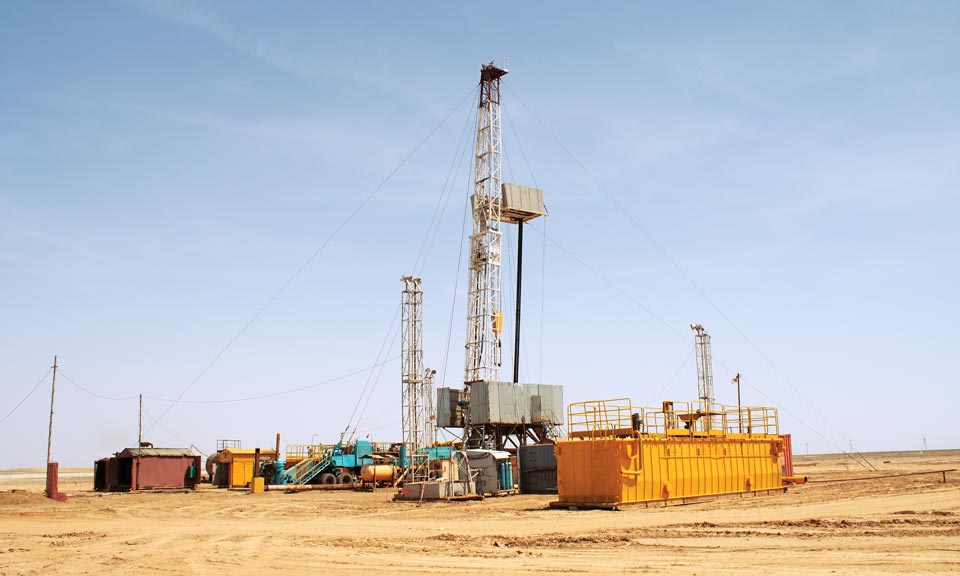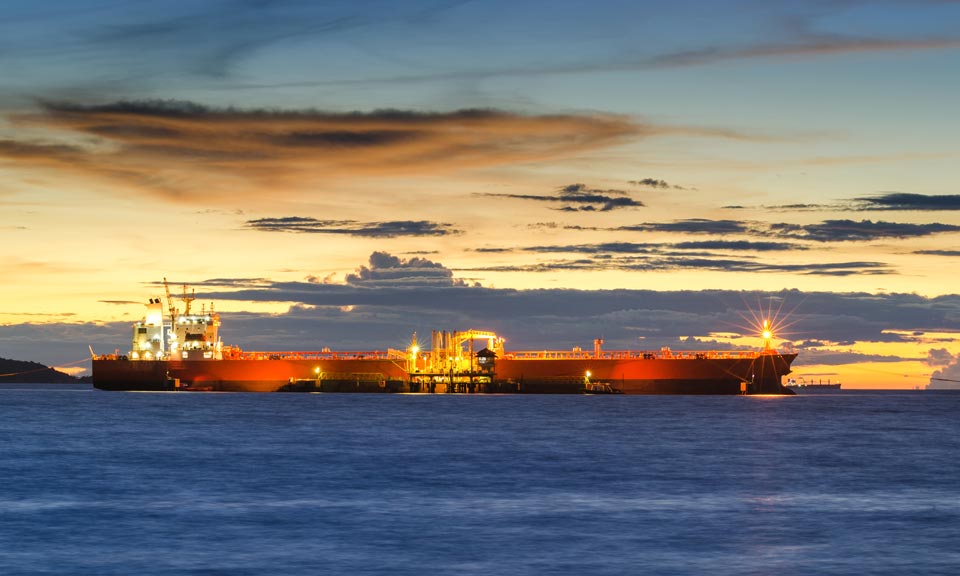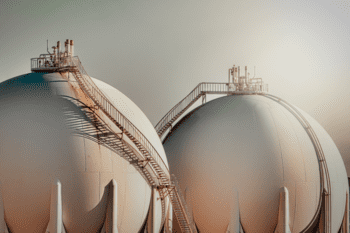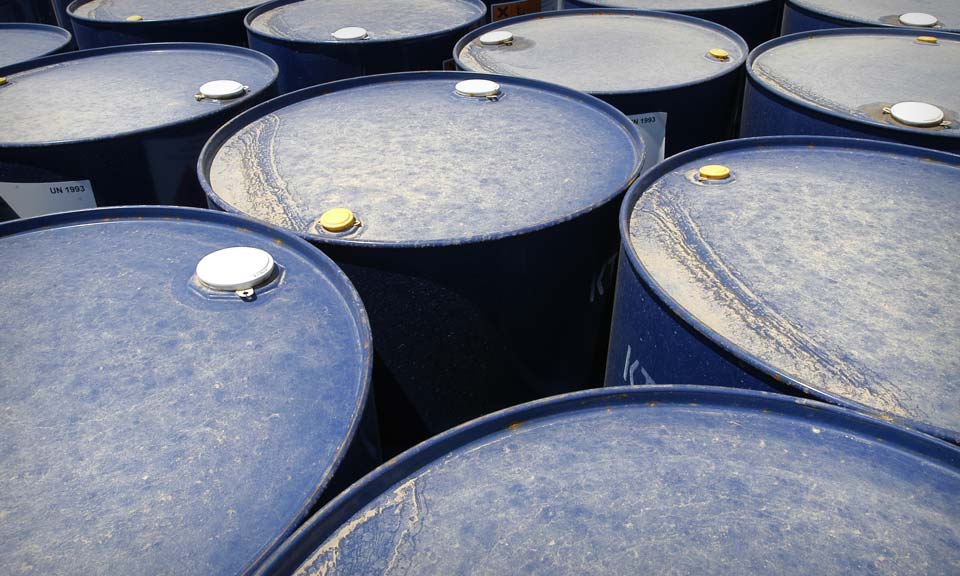Fuel for Thought: Oil market ponders price floor amid demand destruction

Commodities show little sign of shaking the bearish momentum amid a slew of economic warnings across the globe.
Whether the market wants to push oil much below $90/b amid potential OPEC output cuts, looming Russian sanctions, and the end of SPR releases is the big question. Demand destruction may be met by supply reduction.
Prices are often a matter of perspective. On one level, the key S&P GSCI commodity index has fallen by more than 20% since peaking in June, but, from another angle, it is still three times higher than in April 2020 when it went on its lengthy bull run.
Dated Brent is now close to pre-war price levels at just below $90/b. After spiking up to close to $140/b on fears of lost Russian barrels, the market did an about-face as inflation and higher interest rates in the West combined with persistent lockdowns in China.
"Oil fundamentals are expected to ease further in Q4 and into 2023 driving prices lower but risks remain with little spare capacity for crude and some key products," S&P Global Commodity Insights said in a recent research note.
S&P Global expects Dated Brent to average in $90s/b in the fourth quarter and in a similar range into next year, with the structure remaining much flatter as most of the price decline occurs at the front of the forward curve.
China oil demand is falling in 2022 for the first time in decades, and demand growth during the second half of the year is weaker than expected in the US, Western Europe and China.
Special report: Energy in the new era
The macroeconomic picture is full of foreboding signs for global demand. The US Federal Reserve raised interest rates by 75 basis points and pumped up the hawkish volume as it looks to combat core inflation, stripping out volatile food and energy costs, which hit 6.3% year-on-year in August.
Saying that, overall oil demand is still growing, even among the gloomiest of forecasters. And all the evidence is pointing to a recovery in market balances.
Standard Chartered Bank said in a recent research note the market has swung into a large and unheralded surplus.
"Forecasts from consultants and US investment banks of Q3 oil prices of $150/b and higher were mainly based on the assumption of a large deficit; we think the market has not yet fully priced in the extent to which that assumption proved wrong," the analysts at Standard Chartered wrote.
Commercial global oil stocks have started to build in recent weeks, and many analysts see that trend accelerating in the fourth quarter and through the first part of 2023, even as the US brings the release of strategic petroleum reserves to a close.
But the threat of further supply curbs is brutally real.
EU sanctions on Russia kick in in early December, and the question looms large as to whether India and China can maintain the same level of interest in Russian crude. Moscow could also retaliate over the G7's planned price caps on its oil by shutting in swathes of production, wrong-footing the US-led initiative which is intended to keep the oil flowing but hit Putin's ability to fund the Ukraine war.
"Russian supply loss expectations are still assumed to peak at 1.5 million b/d in Q1 2023," according to S&P Global research. "Exports remain resilient, but limited buyers and tankers willing to re-route over 3 million b/d is expected to take a toll."
And OPEC+, producing close to maximum, has already signaled to the market the balance of risks is shifting by deciding to cut output by a symbolic 100,000 b/d at its September meeting. The threat of more sizable output reductions amid historically low spare capacity is certainly a key consideration for the market.
"The justification for $90/b is that the world economy can handle such a price and the only way we can see additional investment to meet future demand … is to keep oil prices at $90/b or above," said independent oil consultant Anas Al-Hajji.
"A severe recession means that a $90/b floor cannot be defended, also it is not in the interests of OPEC+ to defend $90/b in case of recession … but I believe the hard floor is in the $60s," he added.
The US release of emergency stocks also adds a level of complication. Reports the US may start repurchasing 180 million barrels of emergency sales if crude falls below $80/b were quickly walked back.
According to S&P Global there could be a potential rethink of SPR policy that could plausibly annul the final 25 million barrel batch of planned emergency sales through Oct. 31, and delay 26 million barrels of fiscal 2023 Congressional sales beyond an assumed delivery timeline of November-December 2022.
Al-Hajji adds "there is no way the Biden administration is going to refill the SPR at these prices."
MUFG bank analysts added to the argument that commodities react later than financial markets to the economic data. "While elevated commodity prices are driving demand destruction, particularly in Europe and emerging markets, it is critical to emphasize that demand is easing, not contracting," the bank said.
"Our bullish commodities thesis is neither about inflation risks nor the Fed's hawkishness. It is about scarcity led by severe underinvestment in commodity capacity that has left supply unable to meet rising demand induced by government policies around redistribution and ESG considerations."
Ole Hansen, head of commodity research at Saxo Bank, said there could be "pockets of strength" across commodities in energy, metals and agriculture, highlighting "sanctions, upstream cost inflation, adverse weather and a low investment appetite."
While even recent history teaches us there is neither a true ceiling or floor to oil and commodity prices more widely, only the bravest may wish to choose a clear path ahead.

News
Russia, one of the world’s largest oil suppliers, has increasingly turned to non-Western firms to transport its crude to overseas buyers during its ongoing war with Ukraine . With a dual goal of undermining Russia’s war chest without creating significant disruptions to global supplies amid inflation pressure, G7 countries and their allies have banned tanker operators, insurers and other services firms from facilitating seaborne Russian crude exports unless the barrels are sold for no more than $60/b. The price cap regime, which came into force Dec. 5, 2022, does not directly cover tankers flagged, owned and operated by companies outside the G7, the EU, Australia, Switzerland and Norway, and not insured by Western protection and indemnity clubs. While such ships tend to be older and less maintained, their share in Russia’s crude exports market has been rising in recent months amid strengthening prices of Urals -- the OPEC+ member’s flagship crude grade -- and tightening sanctions enforcement by the West. Non-price-capped tankers have a larger market share in shipping Russia’s Pacific crude exports, according to analysis of S&P Global Commodities at Sea and Maritime Intelligence Risk Suite data. Crudes such as Sokol, Sakhalin Blend, and Eastern Siberia–Pacific Ocean grades are more often involved in these trades than Russian barrels from Baltic or Black Sea ports like Urals. Tanker operators in Greece, Europe’s top shipowning nation, managed to keep their traditionally strong market position in Russia in the first few months since the price cap took effect before giving ways to their peers in the UAE, Russia, China and Hong Kong. (Latest update: April 5, 2024)

News
Recording changes to Russian oil exports and EU oil imports since the war in Ukraine Russia’s war in Ukraine has triggered a major upheaval in the global oil markets, forcing Moscow to find alternative buyers and Europe to source new supplies as Western sanctions seek to clamp down on Moscow’s vital oil revenues. With an EU embargo and the G7 price cap on Moscow's oil now fully in place, Russian seaborne crude exports have remained largely resilient as displaced volumes of its discounted oil flow East. Russian oil product exports have also mostly held up with new buyers in Africa absorbing Russian diesel and other fuels now banned from Europe. (Latest update: April 3, 2024)

News
Initiative driven by demand for batteries from vehicles, energy storage IOC aims to be carbon-free by 2046 Tie-up comes as India supports NEV buildup Japan's Panasonic Energy and state-run Indian Oil Corp aim to finalize details for a joint-venture to manufacture cylindrical lithium-ion batteries in India as early as June to September, the Japanese battery maker said April 1. Both companies will engage in "a feasibility study regarding the utilization of battery technology to facilitate the transition to clean energy in India," Panasonic said, and have signed a binding term sheet with details to emerge "by the summer of this year." The initiative by the companies "is driven by the anticipated expansion of demand for batteries for two- and three-wheel vehicles and energy storage systems in the Indian market", it said. The collaboration comes as India takes steps to build up infrastructure for manufacturing and supporting new energy vehicles, especially in its interim budget for 2024-25. Following the budget announcement, Chinese automaker SAIC Motor and India's JSW Group plan to install a production capacity of 200,000 vehicles/year in India, focusing on NEVs, with ramping up to start from the end of 2024. In China, NEV is a term used to designate automobiles that are fully or predominantly powered by electricity and include battery electric vehicles as well as plug-in hybrid EVs and fuel cell EVs. IOC's tie-up with Panasonic will support the energy company's goals to be a zero-carbon emitter by 2046. India's lithium-ion battery manufacturing industry is expected to grow at a compound annual growth rate of 50% from 20 GWh in 2022 to 220 GWh by 2030, data from the India Brand Equity Foundation showed. Platts assessed prices for battery grade lithium carbonate at $14,350/mt CIF North Asia March 28, flat from the previous session, S&P Global Commodity Insights data showed, while lithium hydroxide stood at $14,000/mt CIF North Asia, also unchanged from the session before. Platts Connect: News & Insights (spglobal.com)

News
(Latest update March 28, 2024) OPEC+ ministers face the challenge of managing a slumping oil market as they discuss crude production for 2024. The following infographic highlights some key issues to watch out for during the upcoming talks. Related feature : OPEC+ committee meets as output cut policy finally boosts prices (subscriber content) Click for the full-size infographic